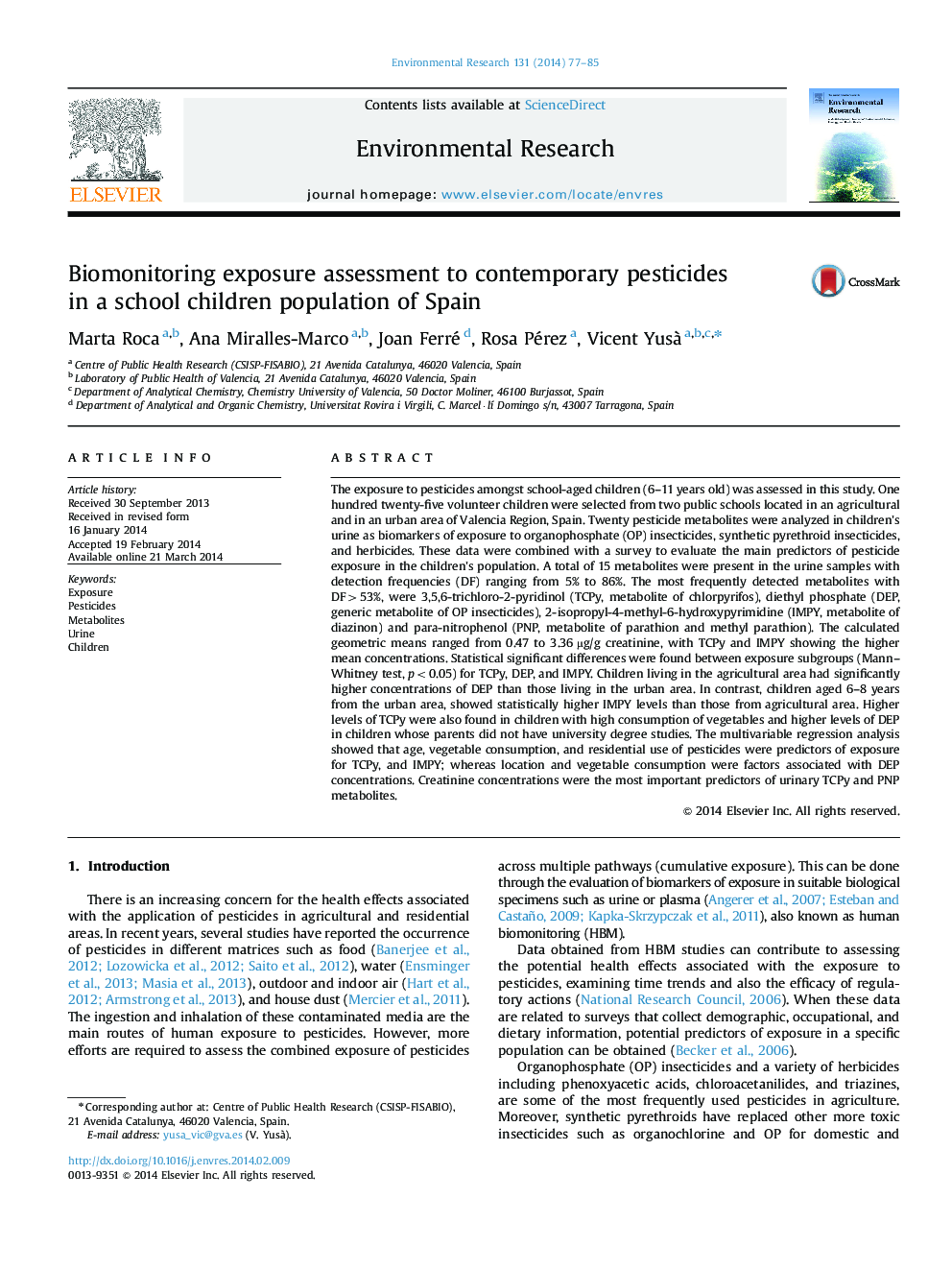| کد مقاله | کد نشریه | سال انتشار | مقاله انگلیسی | نسخه تمام متن |
|---|---|---|---|---|
| 6352755 | 1622570 | 2014 | 9 صفحه PDF | دانلود رایگان |
- Pesticide exposure among 125 children from Valencia Region has been evaluated.
- We found 15 metabolites in the urine samples with frequencies ranging from 5% to 86%.
- Metabolites of chlorpyrifos and diazinon presented the higher urinary levels.
- Predictors of exposure were assessed by a multivariable analysis.
The exposure to pesticides amongst school-aged children (6-11 years old) was assessed in this study. One hundred twenty-five volunteer children were selected from two public schools located in an agricultural and in an urban area of Valencia Region, Spain. Twenty pesticide metabolites were analyzed in children׳s urine as biomarkers of exposure to organophosphate (OP) insecticides, synthetic pyrethroid insecticides, and herbicides. These data were combined with a survey to evaluate the main predictors of pesticide exposure in the children׳s population. A total of 15 metabolites were present in the urine samples with detection frequencies (DF) ranging from 5% to 86%. The most frequently detected metabolites with DF>53%, were 3,5,6-trichloro-2-pyridinol (TCPy, metabolite of chlorpyrifos), diethyl phosphate (DEP, generic metabolite of OP insecticides), 2-isopropyl-4-methyl-6-hydroxypyrimidine (IMPY, metabolite of diazinon) and para-nitrophenol (PNP, metabolite of parathion and methyl parathion). The calculated geometric means ranged from 0.47 to 3.36 µg/g creatinine, with TCPy and IMPY showing the higher mean concentrations. Statistical significant differences were found between exposure subgroups (Mann-Whitney test, p<0.05) for TCPy, DEP, and IMPY. Children living in the agricultural area had significantly higher concentrations of DEP than those living in the urban area. In contrast, children aged 6-8 years from the urban area, showed statistically higher IMPY levels than those from agricultural area. Higher levels of TCPy were also found in children with high consumption of vegetables and higher levels of DEP in children whose parents did not have university degree studies. The multivariable regression analysis showed that age, vegetable consumption, and residential use of pesticides were predictors of exposure for TCPy, and IMPY; whereas location and vegetable consumption were factors associated with DEP concentrations. Creatinine concentrations were the most important predictors of urinary TCPy and PNP metabolites.
Journal: Environmental Research - Volume 131, May 2014, Pages 77-85
